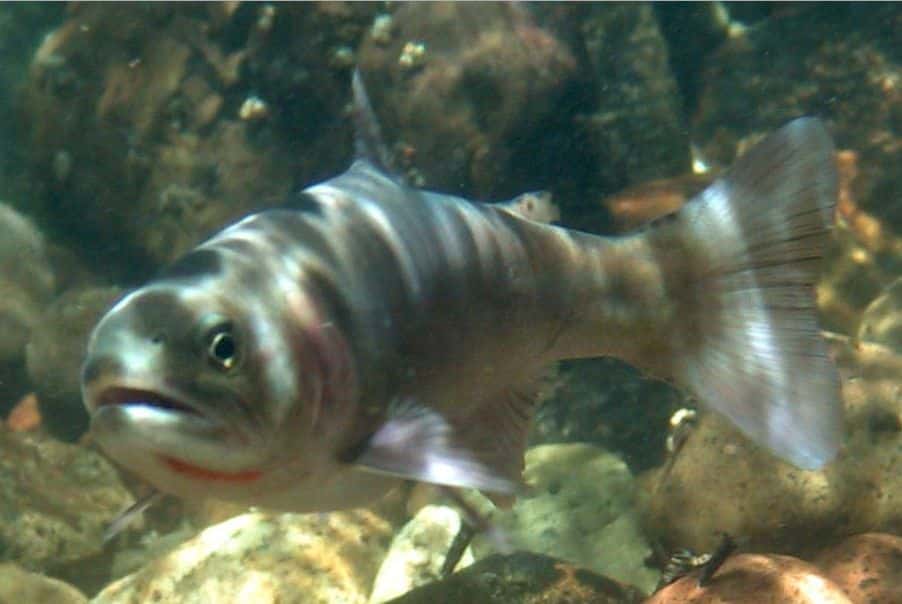This post was last updated on April 8th, 2014 at 05:32 pm
Brief Guide to the Paiute Cutthroat Trout

The Paiute cutthroat trout is a unique species which belongs to the Salmonidae family, and is one of the rarest breeds in the world. It gets its name from a tribe of Native Americans that still reside in the area. Although it is similar to other native trout, the Paiute strain can be distinguished from other indigenous species by the near lack of parr marks, or elongated body spots. The body is scaled and has a light purple tint over a mainly silver base. The Paiute is a very close relative to the Lahontan cutthroat, which is a contemporary species and is identified by predominant parr marks and a copper to pinkish hue.
Paiute Cutthroats Home
The Silver King Creek in the Great Basin drainage system is the home to the Paiute cutthroat trout and is a tributary to the Carson River in California. It is believed that the Paiute began as a sub-population of Lahontan cutthroats that got landlocked around 8,000 years ago. Erosion probably caused the confinement, and it is unclear how long the fish were unable to migrate. The species probably lost its coloring and spots because it had to adapt to clearer water, and the Lahontan markings would have made the Paiute an easy target. Unable to breed under normal migration routes, the Paiute did the best it could where it was. Unfortunately, segregation and isolation for an extended period did nothing to allow the Paiute to flourish.
Beginning in the early part of the 20th century, Rainbow trout were introduced to the area which created a hybrid trout. Sheepherders first noticed the “new” strain of trout around 1930 and began transplanting them to the outlying creeks in an attempt to preserve them. This factor alone may have helped the survival of the Paiute more than any other action regarding conservation efforts. There are still some tributaries is the Sierra Nevada Mountains which contain pure strains of the rare species. However, to date, the Paiute cutthroat trout is a federally protected species which is listed as threatened.
There are a number of controls which have led to the decline of the Paiute cutthroat over the centuries. Being a relatively new breed of fish, the Paiute has been faced with repression from neighboring species, erosion, habitat deterioration, and cross-breeding with other fish. There isn’t a particular factor that is responsible, but all have worked in unison to loom like a black cloud over the Paiute’s future. In 1967, the species was listed as endangered, but after extensive stocking and transplanting protocols were executed, the species was upgraded to threatened in 1975.
In 1985, one of the efforts to assist in the proliferation of the Paiute cutthroat trout was headed by the U.S. Forest Service. The plan was intent on restoring the habitat of the Paiute by constructing log barriers around shorelines to decrease erosion and the deposit of silt. Electric fencing was also utilized in an attempt to discourage foraging near river banks by animals, which was believed to have contributed to species decline. The Forest Service used electroshock to stun and transplant competing fish out of the area as well, which served to further stabilize the population.
In 2010, despite the outcry from environmentalists and several lawsuits, the U.S. Fish and Wildlife Service began poisoning a chosen area with rotenone. This chemical was used to kill all hybrid strains of Paiute and any other species in the zone, and then efforts to restock with pure strains were initiated. Work is still being carried out to give the Paiute cutthroat trout a shot at being declassified as threatened, and if successful, the Paiute will be the first ever species of fish to be taken off the endangered list.
